ARCHIVES INVITES: EARLY TOYS & TRADITIONAL FOLK GAMES
A sharing by the founder of MINT Museum of Toys at the National Archives of Singapore on 23 August 2024.

MINT Museum of Toys at the Archives Talk
‘Archives Talk’ is one of the programmes curated by National Archives of Singapore as part of All Things Singapore (AT SG) 2024, held in conjunction with Singapore Night Festival. In 2024, the topic for the Archives Talk is related to Singapore Night Festival’s theme on ‘The Art of Play‘. The MINT Museum of Toys was specially invited to share about the history of Singapore toys and traditional games due to the museum’s vast vintage collections between 1840s to 1980s from over 40 countries and the speaker of the talk was its very own founder – Mr Chang Yang Fa.
Mr Chang shared insights about a series of childhood toys and games he, his community and children of the early 1950s era made and played with in the past. Through this sharing, he aims to share with the general public more about the museum’s depth of research, curatorial works and efforts to preserve and conserve vintage toys and collectables for generations come to learn of the past, present and future.
The museum has a collection dedicated to ‘Early Toys and Traditional Folk Games’ under the exhibition ‘Collectables’, you can find out more about it here.
About the Collection at the Museum
In Level 2: Collectables, the exhibition explores the wide array of vintage toys beginning from the collection of early toys and traditional folk games between 1930s – 1970s which evokes a huge sense of nostalgia for many.
The toys and games we have come to know today are often embedded in digital devices. However, during our grandparents era, many were wrought out of pure imagination. Since most of the working-class were unable to afford industrial-made imported toys, children would often create their own games using household items. Today, these toys and games are fondly remembered as ‘kampong games’.

Featured above is a ‘Gasing’ top made in Singapore in the 1950s with the word ‘Singapore’ engraved on. In a glance, the gasing top’s material looks like ‘metal but in fact, it is actually wood with gold paint.
Discover more about Early Toys and Traditional Folk Games with a Guided Tour
To find out more about early toys and traditional folk games in Singapore, visit our museum today and opt for a Around the World in 60 Minutes guided tour which is sure to give you a in-depth understanding of the museum and its collections.
You may also read about 4 key vintage toys with old school charm here.

POP-UP IN THE MUSEUM
28 June Friday – 21 July Sunday 2024
POP-UP In The Museum features thematic guided tours & workshops, cinematic screenings, collaborative exhibitions, shopping events and F&B experiences in the museum happening at curated periods of time along the year.
Pop-up concepts have a history that dates back many centuries to the earliest known travelling merchants and grew in popularity from the early 2000s and brands used temporary locations to build awareness and promote products that can appeal to customers.
POP-UP In The Museum at the MINT Museum of Toys carries an edge over regular pop-ups by bringing out the nostalgia and significance of pop-up culture and brands while still tapping into contemporary trends that draws in various communities in the museum industry, arts & culture sector or collecting world.
Collaborative Exhibition (28 June – 13 July 2024)
For Women by Women, A Collection of Door of Hope Dolls & Vintage Handbags
For Women by Women, A Collection of Door of Hope Dolls & Vintage Handbags features Door of Hope Dolls made between 1910s – 1930s from Shanghai, China from the museum’s Childhood Favourites toy collection as well as a line of vintage and rare luxury handbags from the 1990s such as Chanel Dianas and Hermes Kellys. The exhibition explores the parallels of women’s roles and power during the early 20th century and present day.
Established in 1901 in Shanghai, China, the Door of Hope Missionary was founded by Miss Laura M, White, a southern Baptist missionary with the primary goal of rescuing, sheltering, educating and training young Chinese girls and women who were often victims of poverty, human trafficking and exploitation. These women were offered a safe environment and learnt skills such as sewing, embroidery and wood carving to make handcrafted dolls dressed in traditional attires, ethnic and religious garments reflective of life in the 1900s Shanghai. These handcrafted dolls became a significant source of income for the missionary and contributed to the legacy of the Door of Hope Mission today, highlighting the impact of early missionary work that has helped improve the lives of vulnerable populations through education and training.
In the Present Day, the roles and power of women has shifted significantly from a time where women were limited to domestic roles with limited education, employment and restrictive social expectations which dictates dress codes, behaviour and societal participation. Today, women participate in a wide range of roles involving leadership, entrepreneurship and have far greater access to higher education and career opportunities.
This exhibition aims to highlight the transformation of women’s roles from the 1900s to the present day, marked by significant advancement in rights, education and employment.
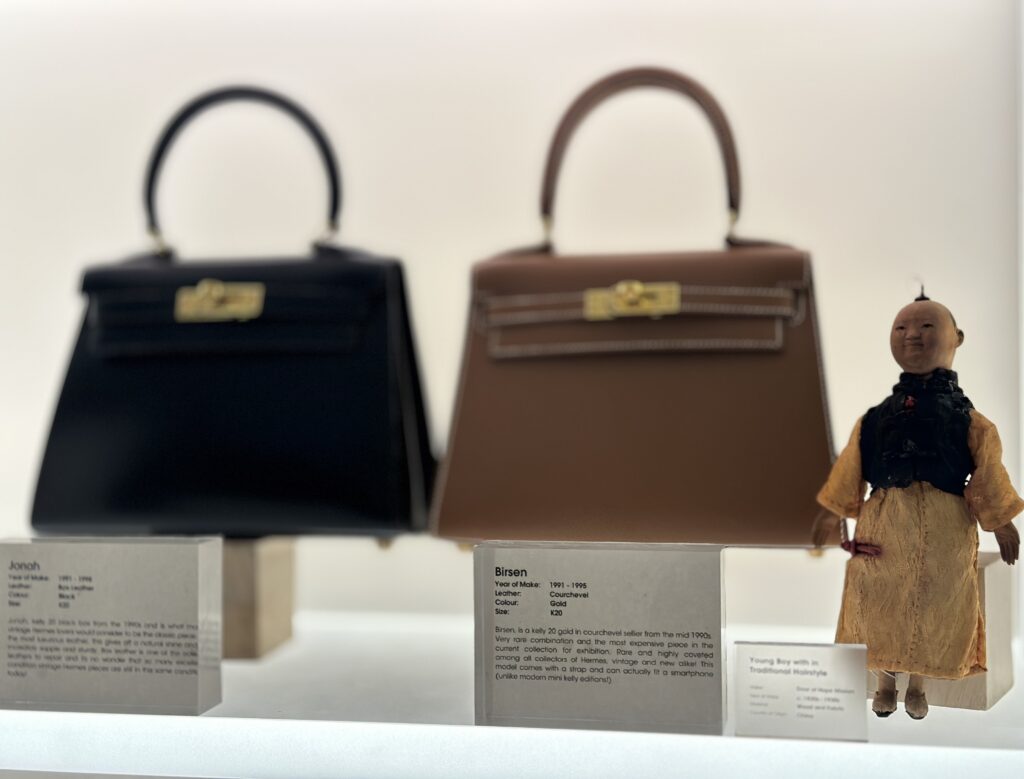
Free Access
Open House
20 July Saturday 2024 & 21 July Sunday 2024
Exhibition
The Museum’s Largest Exhibition of Vintage Toys & Collectables
Specially for POP-UP In The Museum Free Access Open House Weekend, the museum’s largest exhibition of vintage toys and collectables – Collectables is available for self-guided exploration for free.
In Level 2: Collectables, the exhibition explores the wide array of vintage toys beginning from the collection of early toys and traditional folk games which evokes a sense of nostalgia to the golden age of toys during the industrial revolution. Following the mass production of toys since the industrial revolution, the exhibition also showcases the impacts of globalisation leading to the commercialisation of toys. In addition, the exhibition will also investigate how toys can document history and become catalysts for social and political movements in the past.
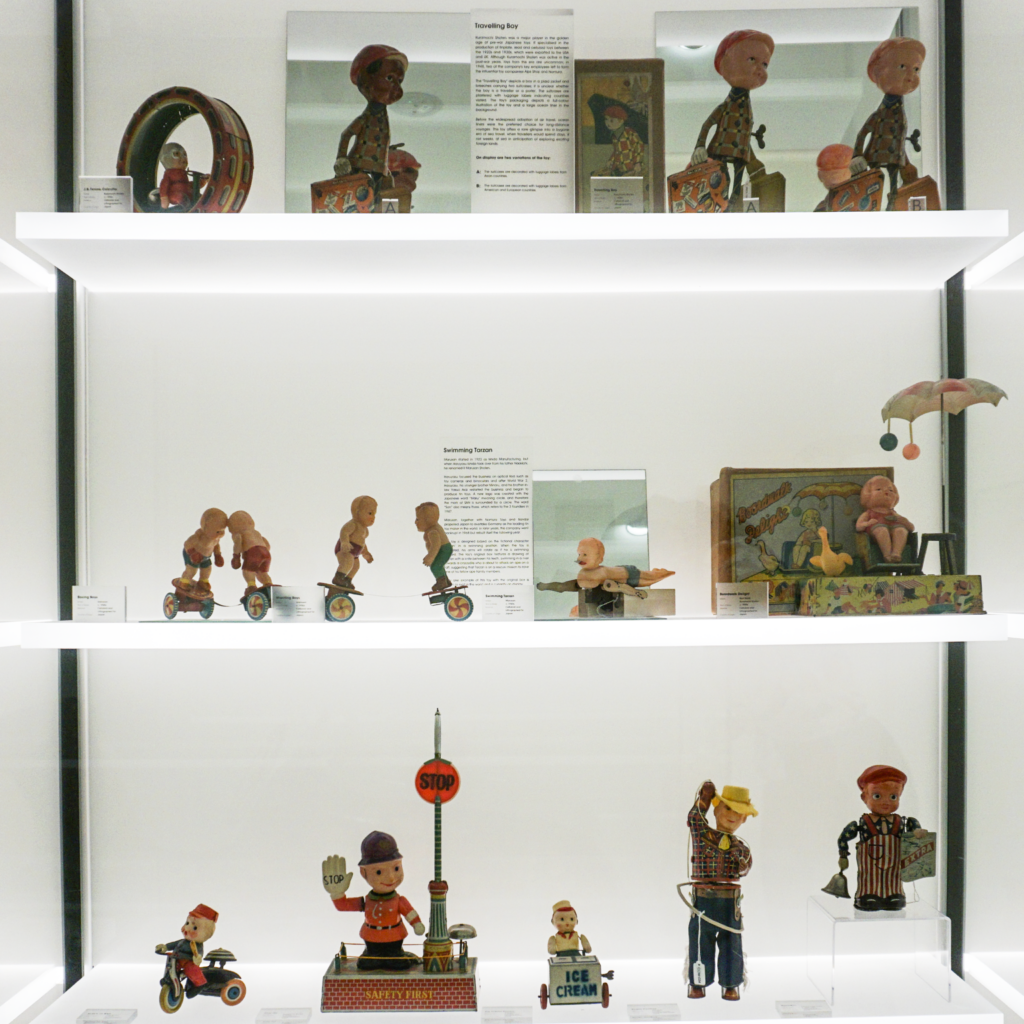
Thematic Guided Tour
Unveiling the Glamour of Beauty Trends Since 1920s
This guided tour explores fashion as an ever-evolving concept since the roaring 1920s era to the era of innovation in the 1930s, turbulent war period during 1940s as well as post-war period of 1950s.
Our guide will provide you insights into the captivating world of vintage makeup, hairstyles and fashion through curated displays of toys and collectables from the museum’s Collectables toy collection. Learn about some of the influential figures and cultural shifts that shaped glamorous looks such as the first modern swimsuit which came into the fore during 1930s and understand how some of these trends continue to inspire modern beauty today.
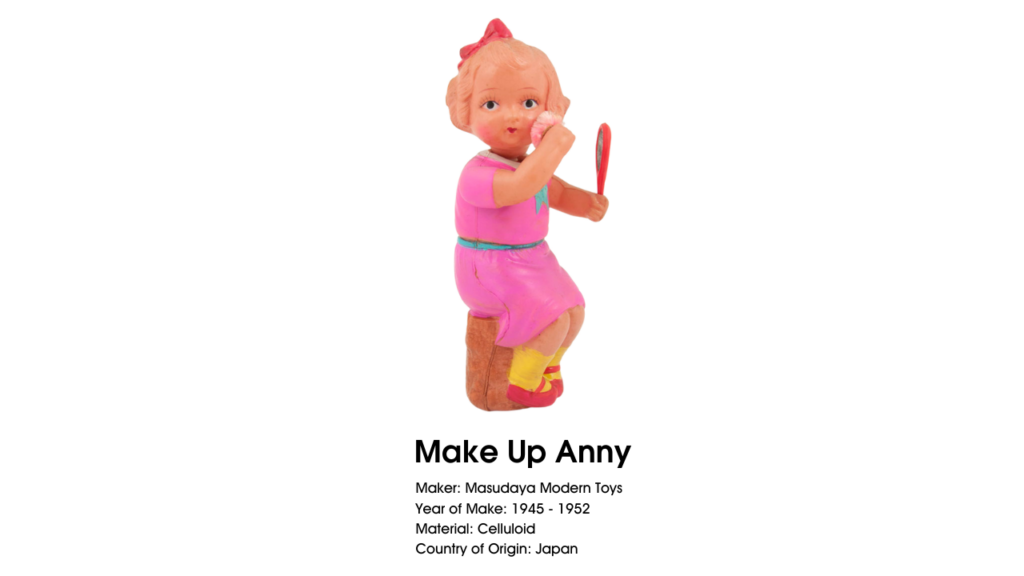
Vintage Luxury Handbags Shopping
A line of vintage and rare luxury handbags from the 1990s such as Chanel Dianas and Hermes Kellys sourced by online luxury boutique – My Grandfather’s Things will be on display and sale.
This is a 2-day free-access shopping event on 20 July 2024 & 21 July 2024 at the MINT Museum of Toys.
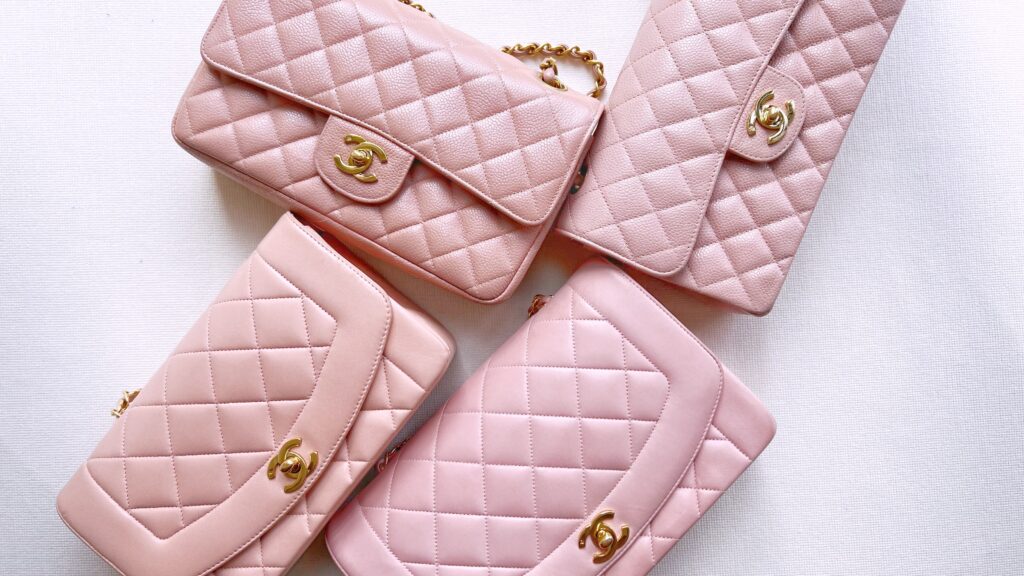
A Drinking Experience At The Public Gallery
Inviting all wine-loving folks to ‘wine’ down between 12pm – 630pm at the museum’s versatile yet unconventional gallery space – The Public Gallery located at the rooftop level.
Happening during the last weekend of this season’s POP-UP In The Museum, guests can choose to enjoy either a full bodied rich Merlot or a light crisp dry Sauvignon Blanc, both from the French Winery – Les Producteurs Reunis. Enjoy this drinking experience at The Public Gallery by the glass or by bottle! This experience is available for booking at Level R (Rooftop) between 12pm – 630pm only.
Fees applies (No Service Charge & GST)
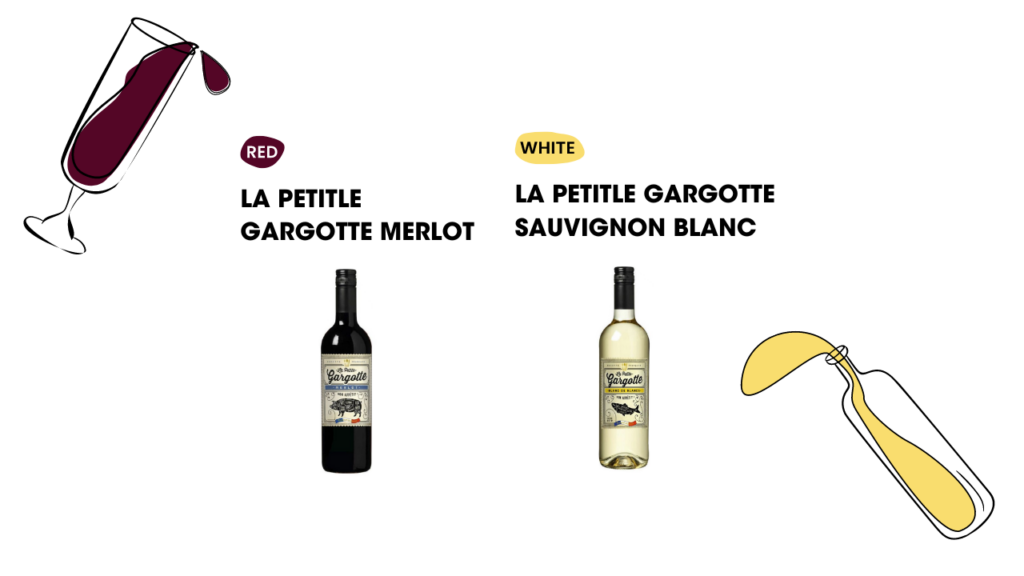
Exhibition: Vintage Enamel Advertising Signs
This exhibition located at the rooftop level of the museum (Level R) features the museum’s vintage enamel advertising signs collection which traces how vintage enamel signs document the many facets of everyday life for middle-class consumers between the 1800s to the mid-1900s. Two collections – Tasks at Home and Infant Care – investigate the domestic lives of women, while the Delicacies of the Middle Class collection offers a rare look at historic 19th century chocolate manufacturers. Or, discover the leisure activities of working and middle-class folk through the Industrial Alehouses and Travel and Transportation collections – which explore industrial drinking culture and innovations to transportation respectively.
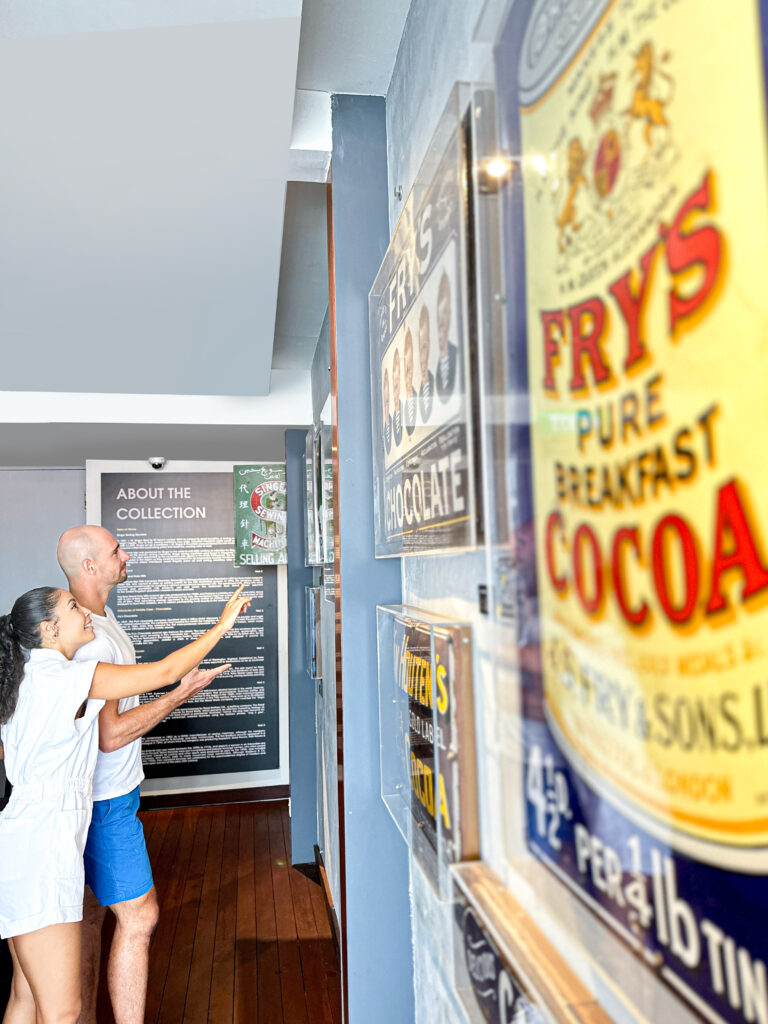
Featured Exhibitions
Discover featured exhibitions at 5 stairwells of the museum namely:
- Stairwell R/5: Vintage Decorative Tins
- Stairwell 5/4: Birth of Astro Boy
- Stairwell 4/3: Spooky Horror
- Stairwell 3/2: Bedtime Stories
- Stairwell 2/1: Beatles Memorabilia
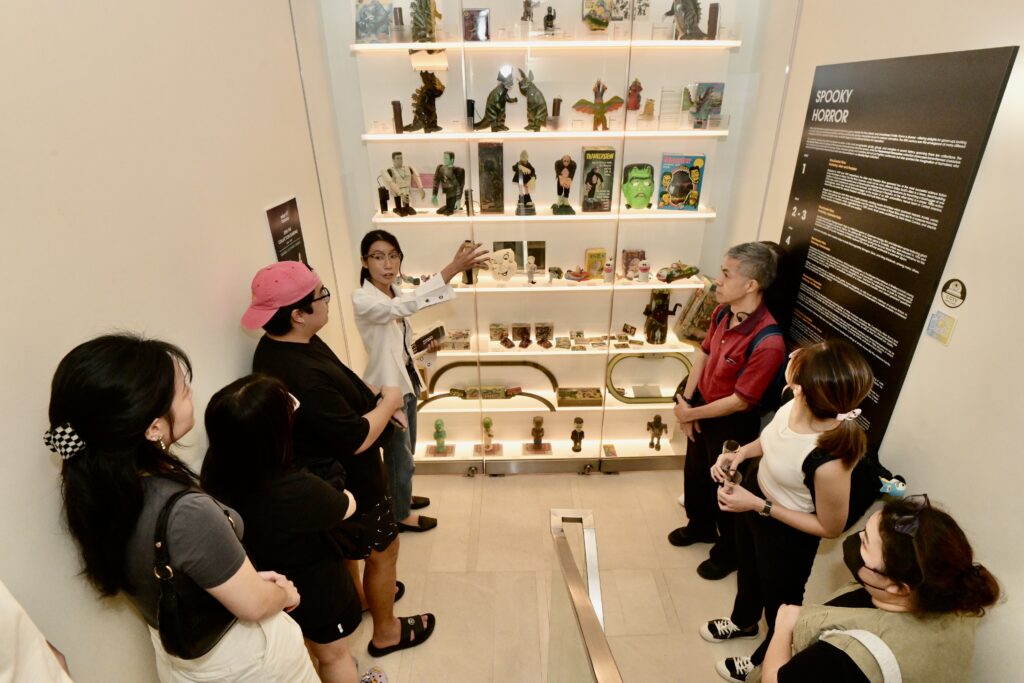
For enquiries about POP-Up In The Museum or if you are keen to collaborate with the museum for pop-ups, please email info@emint.com
Robot toys have captured the imaginations of children and adults for generations, evolving from simple wind-up figures to sophisticated mecha warriors over the years. Join us on a journey through time as we explore the fascinating history of robot toys, from their humble beginnings to their modern incarnations.
The Early Days: Wind-Up Wonders
Before there were robots, there were automatons. These purely mechanical toys could move when prompted or set to do so, repeating the same motion over and over again. While automaton design could get extremely complicated and complex, they would soon be replaced by the advent of the robot.
With playwright Karel Capek coining the term “robot” in 1921, the earliest robot toys soon followed. These were typically made of lithographed tin or plastic – new material innovations that made them seem cool and futuristic compared to wooden or metal automatons. Innovations in plastic also made plastic robot toys cheap, durable, and easy to mass produce, which gave them an edge over heavy, costly automatons.
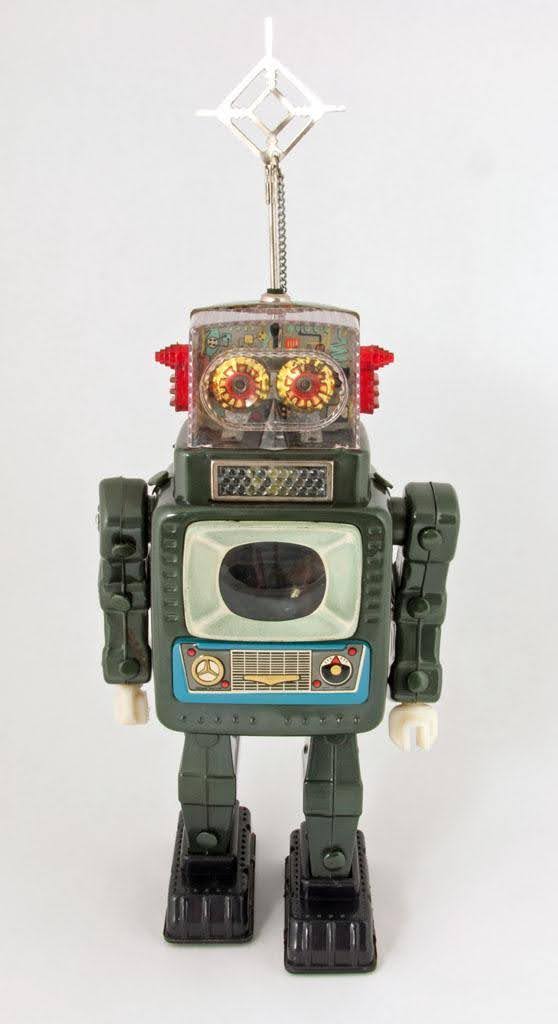
Year of Make: 1960s
Maker: Alps Shoji
Materials: Plastic, Tin
Country of Origin: Japan
These charming toys, such as the Television Spaceman from the 1960s, delighted children with their mechanical movements and futuristic designs. These designs were often inspired by the era’s fascination with space exploration and technology, ranging from the Atomic Age of the 1940s to the rise of the Jetsons TV series. Robots represented the possibilities of what could happen in an optimistic post-World War II world before we even knew that events like the moon landing would eventually come to pass.
The Rise of Mecha: From Gundam to Transformers
In the 1970s and 1980s, the mecha genre exploded in popularity across multiple platforms, thanks to iconic franchises like Gundam and Transformers. These larger-than-life robots captivated audiences with their epic battles and complex storylines, inspiring a new generation of robot enthusiasts. They weren’t just passive servants or sidekicks anymore – they were heroes of their own!

Year of Make: 1980s
Maker: S.J.M.
Material: Plastic
Country of Origin: Taiwan
Robot toys like this red-coloured Hero Robot began to bear more stylised features similar to that would define this era of mid-century retrofuturism. (Psst, if you visited the Barbican in London in 2017 these robots might look familiar! Yup, a series of our robot and outer space-themed toys were featured in the Barbican’s 2017 Into the Unknown exhibition on the history and development of science fiction, reflecting the significance of robot toys to the wider sci-fi genre as we know it!)
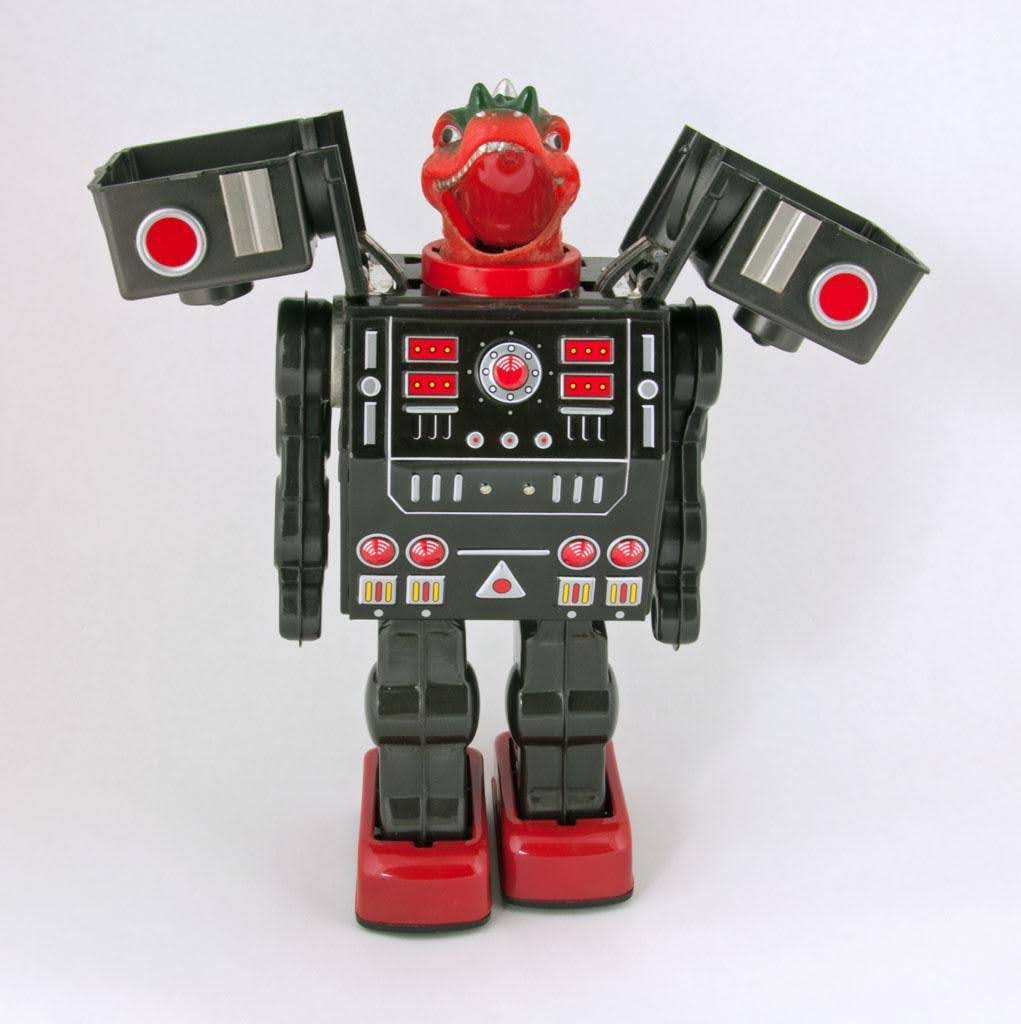

Year of Make: 1980s
Maker: R.M
Materials: Plastic, Tin
Country of Origin: Japan
They also began to be more imaginative, like this Dino-Bot that could transform to reveal a dinosaur’s head hidden within – a precursor to similar toys from the Transformers or Power Rangers series to come.
Robot Toys and What They Tell Us about Technological Progress

As technology continues to advance rapidly, our fascination with robot toys only grows stronger. From the simple wind-up figures of yesteryear to the sophisticated remote-controlled robots of today, the evolution of robot toys mirrors our ever-changing relationship with technology and our understanding of autonomy, artificial intelligence, and the role of technology in our lives.
With each new innovation, robot toys become more interactive, lifelike, and versatile. They not only entertain and delight but also serve as educational tools, teaching children about robotics, programming, and engineering concepts in a fun and engaging way. As we look to the future, the possibilities for robot toys are limitless, offering endless opportunities for creativity, exploration, and discovery.
At the MINT Museum of Toys, we celebrate the legacy of robot toys, mecha and more with our unique collection of vintage robot toys, spanning our Outer space and Astro Boy collections and beyond. These toys capture the spirit of exploration and adventure, with the power to transport children and adults alike to distant worlds and alien landscapes full of uncharted possibilities.
Visitors interested in discovering how these beloved playthings have evolved over time are welcome to visit our children’s museum or sign up for an engaging museum tour in Singapore with our crew. Such experiences offer guests of all ages the chance to interact with vintage toys and memorabilia, fostering a deeper appreciation for the artistry and craftsmanship of the past.
Join us on a journey through time and space as we explore the history of robot toys at the MINT Museum of Toys. Book your tickets today and embark on an unforgettable adventure!
Fairy tales: Beloved by children and adults alike, these timeless stories have enchanted generations with their magical worlds and moral lessons. From hearing about Goldilocks’s adventures before bedtime to enjoying updated, ‘grittier’ remakes of “Sleeping Beauty” as an adult, fairy tales continue to have a universal allure that transcends time.
But behind the familiar names we hear today – Snow White, Aurora, Ariel, and Belle – lies a variety of darker, more intriguing histories. Join us as we delve into the original un-sanitised tales of popular fairy tale mainstays, uncovering their hidden depths and surprising origins – and what they can tell us about the power of storytelling itself.
The Original Grimm Fairy Tales
If you’re a fan of “Rapunzel”, “Hansel and Gretel”, “Sleeping Beauty”, or “Snow White and the Seven Dwarves”, you’ll have the Brothers Grimm to thank for that. Jacob and Wilhelm Grimm travelled throughout Germany in the 18th and 19th centuries, documenting folktales from across the country. Their collection grew to over 200 tales by the end of their lives, and their work set the first standards for analysing folklore and local legends in decades to come.
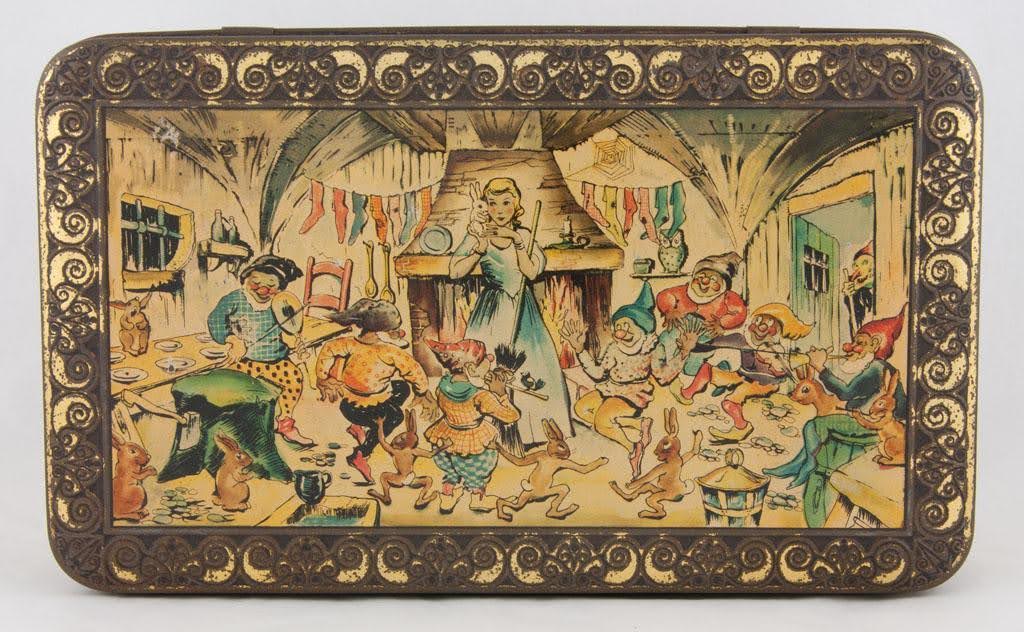
Snow White and the Seven Dwarfs
Year of Make: Unknown
Maker: Unknown
Material: Lithographed Tin
Country of Origin: Unknown
However, if you’ve ever come across the original versions of these tales, you might be shocked at some of the gory details that later versions have omitted. For example, the original Snow White’s stepmother is forced to dance in red-hot iron shoes until she dies – a much more graphic death compared to Disney’s Snow White.
Some of these darker elements were toned down by the Grimms themselves, as well as media companies of the 20th century looking to make more child-friendly adaptations. It’s no wonder that most modern adaptations are based on Disney’s animated feature film rather than the original Grimm tale!
Nevertheless, the original Grimm fairy tales remain a fascinating glimpse into the darker side of storytelling. Intrigued? Check out the Snow White and The Seven Dwarfs tin container above and even more Snow White memorabilia in our museum’s Characters collection.
Hans Christian Andersen’s World of Wonder and Sorrow
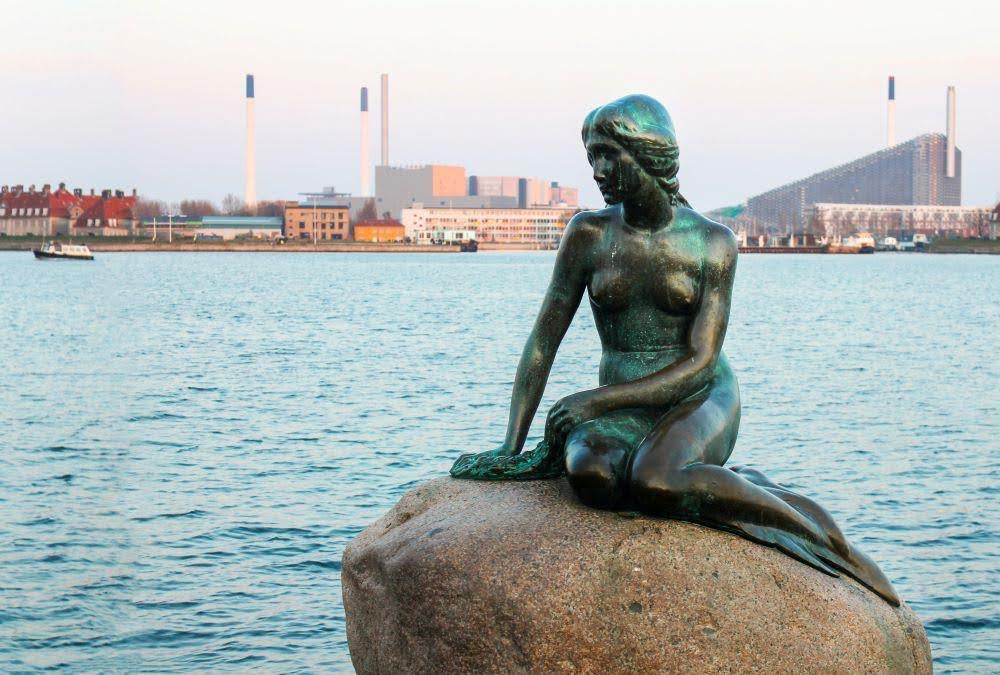
Hans Christian Andersen is another legendary figure in the world of fairy tales, known for his poignant and sometimes melancholic stories from across Denmark. His most famous tale, “The Little Mermaid”, ends tragically, with the mermaid choosing to dissolve into sea foam rather than kill the prince to regain her mermaid form. This is in stark contrast to the Disney-fied version, which sees Ariel (the eponymous mermaid) marrying her true love Prince Eric.
Andersen’s fairy tales often grapple with themes of loss, longing, and the complexities of desire. There is speculation that Andersen was bisexual, with the writer having embarked on at least one confirmed relationship with another man, and some modern scholars suggest that the complicated histories of his characters are grounded in his own grappling with his sexuality. Regardless, the depth of human emotion conveyed in Andersen’s tales continues to resonate deeply with readers, and in not always having a happy ending, it conveys the complexity of a regular life, too.
Charles Perrault’s Legacy of Morality and Magic
Charles Perrault’s fairy tales, including “Little Red Riding Hood” and “Cinderella”, are among the most enduring in the genre. Known for their moral lessons and fantastical elements, they have captivated readers for centuries.

Little Red Riding Hood – Children’s Fairy Tales
Year of Make: 1920s
Maker: Unknown
Material: Lithographed Tin
Country of Origin: United Kingdom
However, like the Grimm brothers, Perrault’s original tales were darker and more morally ambiguous than their modern counterparts. In the original “Little Red Riding Hood”, there is no happy ending where the wolf is defeated and captured. Instead, the story ends with the wolf devouring the girl, emphasising the dangers of straying from the path. This not only provided a practical tip for French country folk in the 17the century, but alludes to larger messages of conformity and social stratification within society.
For a peek into how Perrault’s tales have echoed through the generations, take a look at this book-themed money box bearing Little Red’s visage and even more fairy tale memorabilia at our Bedtime Stories stairwell collection.
Adapting Tales for Changing Times
As stories evolve over time, so too do the values they impart. From The Flintstones and The Jetsons to how Disney has changed and evolved in its first 100 years, narratives reflect the cultural norms and values of the societies that produce them, which can then be seen in the toys and memorabilia that accompany them.
At the MINT Museum of Toys, we celebrate the rich history of fairy tales through our unique collection of vintage toys and childhood memorabilia. From Snow White and the Seven Dwarves to Pinocchio, our exhibits showcase the evolution of these beloved tales and the cultural significance they hold.
Join us on a journey through the enchanted world of fairy tales and discover the hidden stories behind your favourite characters. For those looking to truly immerse themselves in the stories and characters of yore, our cheap venue rentals in Singapore are open for booking and perfect as wedding event spaces, pop-up exhibitions, and more.
Experience the magic of visual storytelling at a kid-friendly museum that’s fun for all ages. Book your tickets today and be prepared for an unforgettable adventure!
Comic books: a medium that has the power to stir controversy, evoke memories, and captivate imaginations. From Lian Huan Hua to the Dark Knight, these illustrated narratives have left an indelible mark on popular culture across the world.
Journey with us through the colourful world of comic books, and we’ll explore how this form of visual storytelling has made its presence felt in both thought-provoking and lighthearted ways.
Controversial Comics: Little Rascals
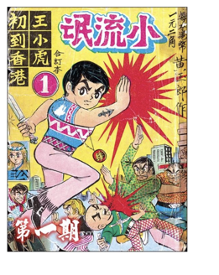
Maker: Tony Wong (黄玉郎)
Year of Make: 1970
Country of Origin: Hong Kong
Little Rascals (龙虎门 in Chinese, later renamed Oriental Heroes) was created by the renowned Tony Wong (黄玉郎, Wong Yuk Long) in 1970s Hong Kong. The comic series garnered intense attention for its graphic illustrations and mature themes, which seemed at odds with its illustrative art style. The stories within the comic, which often depicted violence and complex moral dilemmas, stirred controversy among readers and authorities alike.
In fact, this comic series was so provocative that it played a significant role in the enactment of the 1975 Indecent Publication Law, a watershed moment in Hong Kong’s comics industry. The law sought to regulate and censor content deemed indecent or harmful to young readers and banned explicit violent content in manhua (Chinese-language comics).
The significance of Little Rascals on Hong Kong’s wider cultural scene is so noteworthy that our copy is currently on loan to the Barbican Centre in London for a touring exhibition on Asian comics since 2017.
The MANGASIA Wonderlands of Asian Comics exhibition presents the largest-ever selection of Asian artworks and comics to date. You’ll be able to spot Little Rascals in the ‘Censorship and Sensibility’ section, a fitting spot given its thorny history!

Between 9 March 2024 to 8 September 2024, the museum’s copy of Little Rascals will be making its American exhibition debut at Asian Comics: Evolution of an Art Form at Bowers Museum and offers a gateway to an unexplored world of graphic storytelling and its artistic value.


Memorable Comics: Beano and The Dandy
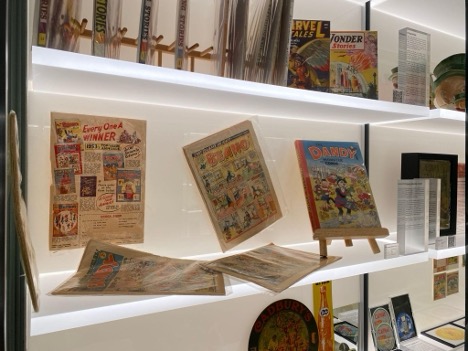
Maker: D.C. Thomson & Co. Ltd.
Year of Make: 1950
Materials: Paper
Country of Origin: United Kingdom
On the lighter side of comic book history, we have the beloved British classics The Beano (formerly The Beano Comic, also known as just Beano) and The Dandy. Published by Scottish publishing company DC Thomson starting in the 1930s, these iconic comics have been a source of joy and laughter for generations and are amongst the UK’s best-selling comic titles of all time.
Both Beano and The Dandy are renowned for their cheeky, anti-authority humour and irreverent characters, seen as a stark contrast to their cartoonish art style. If anything, however, it is this very contrast that made it clear how much of these cartoon’s appeal lay in the childish, nonsensical hijinks that their characters got up to.
These comics offered a different perspective on visual storytelling, one that encouraged readers to question the status quo and embrace the power of laughter. They celebrated the mischievous side of childhood, reminding us that sometimes it’s essential to defy convention and just have fun. No matter the age of the reader, they could get a good laugh out of the sticky situations and outlandish pranks that the characters fell into – making these comics a testament to the enduring power of simple, straightforward humour!
Both series have become cultural touchstones, particularly among teen readers, and their impact is still felt today. Even though The Dandy officially ended its run in June 2013, it continues to publish yearly specials and annual editions thanks to its troupe of unwavering fans.
MINT Museum of Toys: Sharing Treasures, Inspiring Collaboration
Discover the powerful impact of visual storytelling through comic books at the MINT Museum of Toys. We recognise the profound influence of popular culture on social customs and mores, which is why our mission is to celebrate and preserve these artefacts of nostalgia for generations to come.
In addition to our extensive collection of vintage toys and childhood memorabilia spanning from the 1840s to the 1980s, we are thrilled to announce our commitment to collaborative projects with international museums and organisations, like the Barbican exhibition above, as well as toy enthusiasts from all walks of life! Our cheap venue rentals in Singapore are available for all types of occasions, from event spaces for weddings to pop up spaces for collection showcases and more.
If you share our passion for preserving and sharing the magic of collectables, we invite you to connect with us today via email info@emint.com or WhatsApp 83398966 to see how we can bring the world of toys, comics, and memorabilia to a broader audience.
When we think of iconic comic book heroes, one name that immediately comes to mind is Batman. The Dark Knight has been a beloved figure in the world of comics for generations, captivating the hearts and minds of both children and adults alike. But what is it about Batman that has made him such a legendary character? Join us on a journey through the history of Batman’s legacy and discover the reasons behind his ever-enduring popularity.
The Birth of Batman
Batman, the alter ego of billionaire Bruce Wayne, first graced the pages of Detective Comics #27 in May 1939. Created by artist Bob Kane and writer Bill Finger, he was a departure from the superpowered heroes that had dominated the comic book landscape at the time.
While his compatriots were armed with superpowers, enhanced genes, and some sort of camaraderie with law enforcement, Batman bucked the trend as a vigilante detective with no unique physical powers of his own. Instead, he was simply a mortal man who relied on his intelligence, martial arts skills, and an array of gadgets to fight crime in Gotham City and strike terror in the hearts of criminals.
From the very beginning, Batman struck a chord with readers. His tragic origin story – witnessing the murder of his parents – added depth to his character’s motivations. An unwavering commitment to justice, without superhuman abilities as a safety net, made him a symbol of determination and resilience. In Batman, readers have a gritty hero who isn’t afraid to get brutal with crooks while still displaying compassion for those who need it.
The Evolution of Batman in Popular Culture
Batman’s influence soon extended beyond the pages of comic books. In 1966, the Batman TV series starring Adam West brought the character to a wider audience, embracing the campy and humorous elements of the character. This era of Batman became a pop culture phenomenon, complete with the iconic “Bat Dance.”
As the years went by, Batman continued to evolve. His character became more complex in the 1970s and 1980s, grappling with moral dilemmas, personal struggles, and the consequences of franchise-wide storylines like Crisis on Infinite Earths. An ever-expanding rogues’ gallery of villains, including the Joker, Catwoman, and the Riddler, continued to add narrative depth and creativity to each comic book run.
In 1989, Tim Burton’s “Batman” film, featuring Michael Keaton as the Caped Crusader, redefined the character for the big screen. The film’s darker and more gothic tone set a new standard for superhero movies and transformed Batman into a cinematic force to be reckoned with.
One of the key factors that contributed to Batman’s popularity was his adaptability. Whether it was the dark and brooding Batman comics of the 1980s, the more lighthearted 1960s TV series, or the contemporary complexity of Christopher Nolan’s The Dark Knight trilogy in the 2000s, Batman has remained relevant to each generation of fans.
Batman Collectibles at MINT Museum of Toys
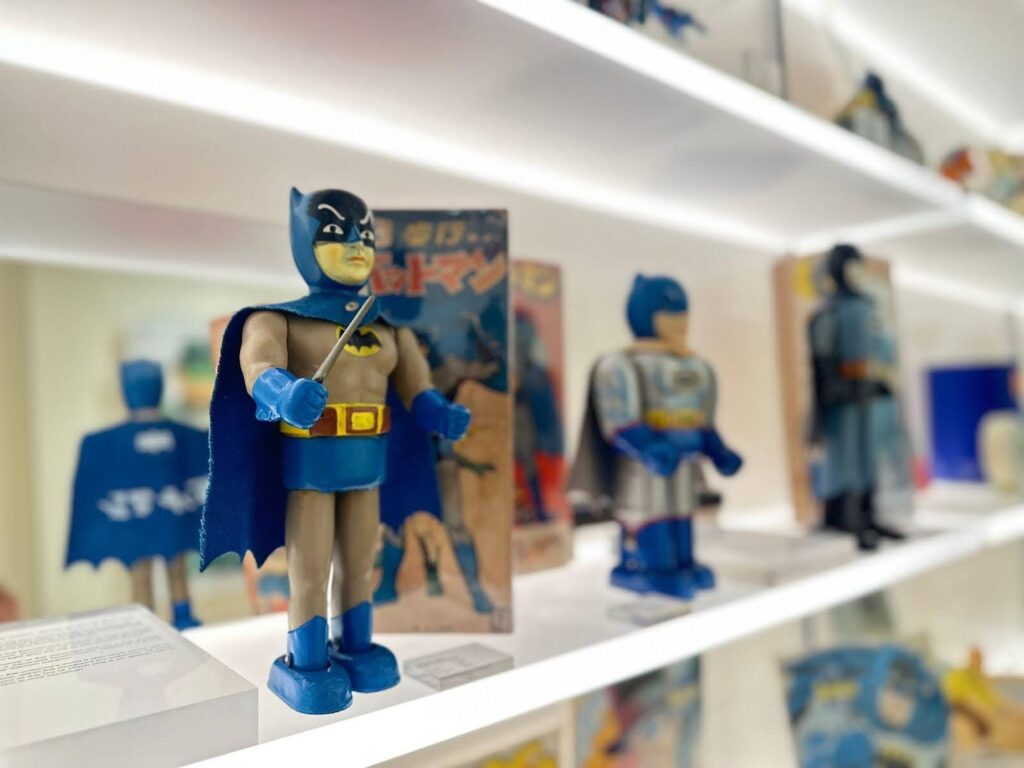
Maker: Bandai
Year of Make: c.1960s
Material: Vinyl
Country of Origin: Japan
At the MINT Museum of Toys, we are proud to showcase a selection of the best Batman comics and collectible toys paying tribute to the rich history of this iconic character. One of our prized possessions is the rare Batman with Cape and Sword. It is the only complete set in mint condition in the world, featuring both the cape and sword, along with its original packaging box.
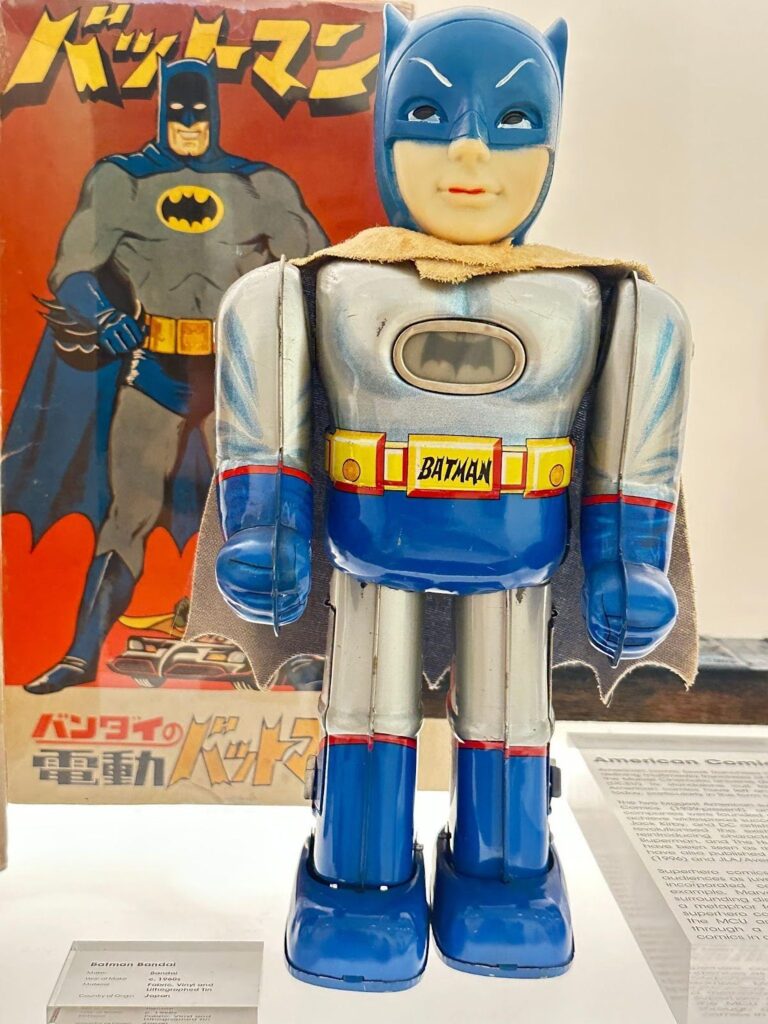
Maker: Bandai
Year of Make: c. 1960s
Material: Fabric, Vinyl and Lithographed Tin
Country of Origin: Japan
Those who join our learning journeys for students in Singapore will also get to be up close with Batman Bandai, a vintage toy showcasing the artistry of mid-century Japanese toy makers. Through experiential learning activities, participants will get a unique opportunity to connect with history and culture through the lens of toys. It’s a fun and educational experience that brings history to life – and one you won’t get anywhere else!
Whether you’re a lifelong Batman fan or simply curious about the world of vintage toys, the MINT Museum of Toys has something special for everyone. Come and join us in celebrating the legend of the Dark Knight and the wonder of toys from days gone by.
Rediscover your favourite films in a whole new light at MINT Lumens, Singapore’s latest private indie cinema experience! It’s time to step out of the ordinary and into the extraordinary as we introduce you to this unique venture, where vintage toys and cinematic masterpieces come together for an unparalleled movie night.
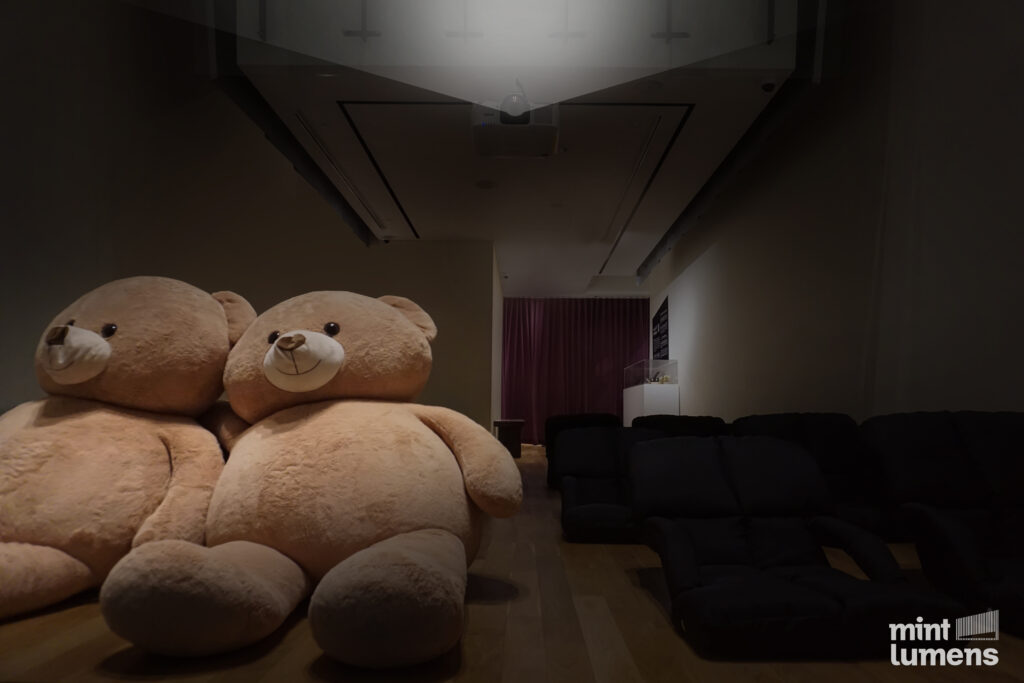
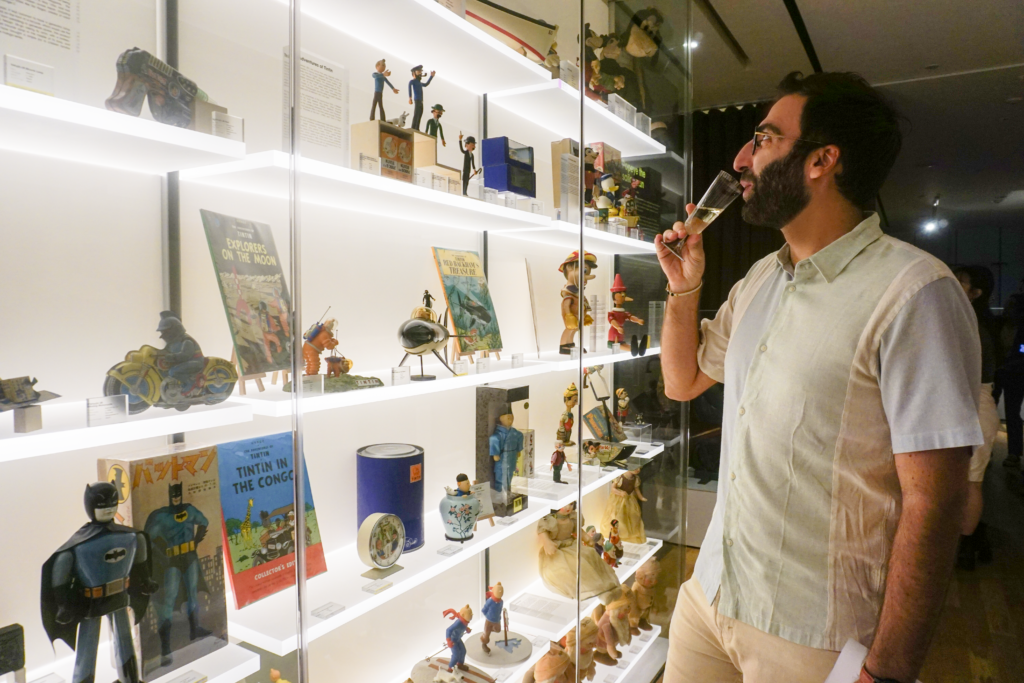
A Cinematic Journey Like No Other
MINT Lumens isn’t your typical cinema; it’s an unconventional screening experience set within the captivating backdrop of the MINT Museum of Toys. Situated within the premises of our vintage toy museum, we’ve reimagined the way you enjoy movies, transforming film screenings into opportunities for conversations and community-building.
Begin with Wine in the Museum & Collection Sharing from 6.30pm onwards, offering you the chance to mingle with fellow moviegoers, enjoy lighthearted conversation over a glass of wine, and take a peek behind the scenes of our vintage toy collections. Amassed from over 40 countries with toys and memorabilia dating between the 1840s to 1980s, our shelves are more than just a display – they’re a peek into times, worlds, and histories that are long gone.
Explore rarely-discussed topics and trends in the world of collecting, cultural and societal movements, as well as controversial themes and stories related to the upcoming flick. It’s a rare chance to hear some of the stories behind our toy collections and discover the hidden treasures within.
Finally, the main event begins with the Screening in the Museum from 7.30pm onwards. Say goodbye to stiff chairs, bothersome armrests, and the occasional seat-kicking neighbour. Our private cinema is set up with blankets, cushions, cosy corners, and life-sized plush teddy bears for the ultimate in movie-watching comfort. Free-seating arrangement ensures you can enjoy your chosen flick just like you would at home or at a friend’s place. No more worries about blocked views or uncomfortable seats!
But wait, there’s more! At MINT Lumens, we’re prepared to take your movie experience to the next level. Our high-powered laser projector is accompanied by a customised 250-inch widescreen display coated in Screen Goo – a specially formulated paint meant for high-performance projection.
The experience is further elevated with a clear distribution audio system, providing cinematic-quality effects. Additional Invisa 650 speakers with folded ribbon tweeters ensure extreme wide dispersion of audio throughout the space, for a truly immersive screening.
You can also elevate your viewing with delectable add-ons to sweeten the deal. Order bar bites and drinks from the basement vinyl-listening bar Vertigo26, or indulge in cocktails and tidbits from the rooftop bar Heaven @ Seah Street as you enjoy your movie. It’s the perfect way to complement your cinematic journey. Every MINT Lumens guest will also receive a complimentary bottle of alkaline water to take into the screening,
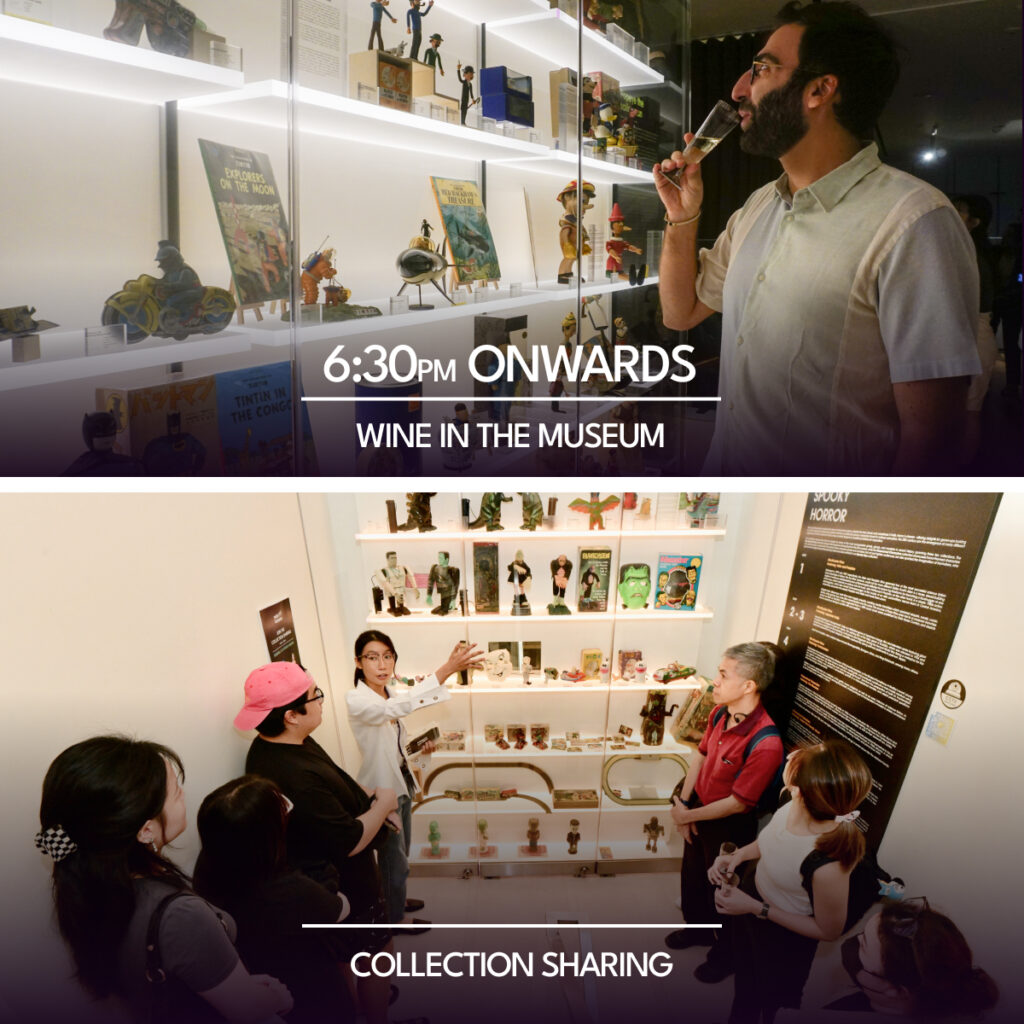
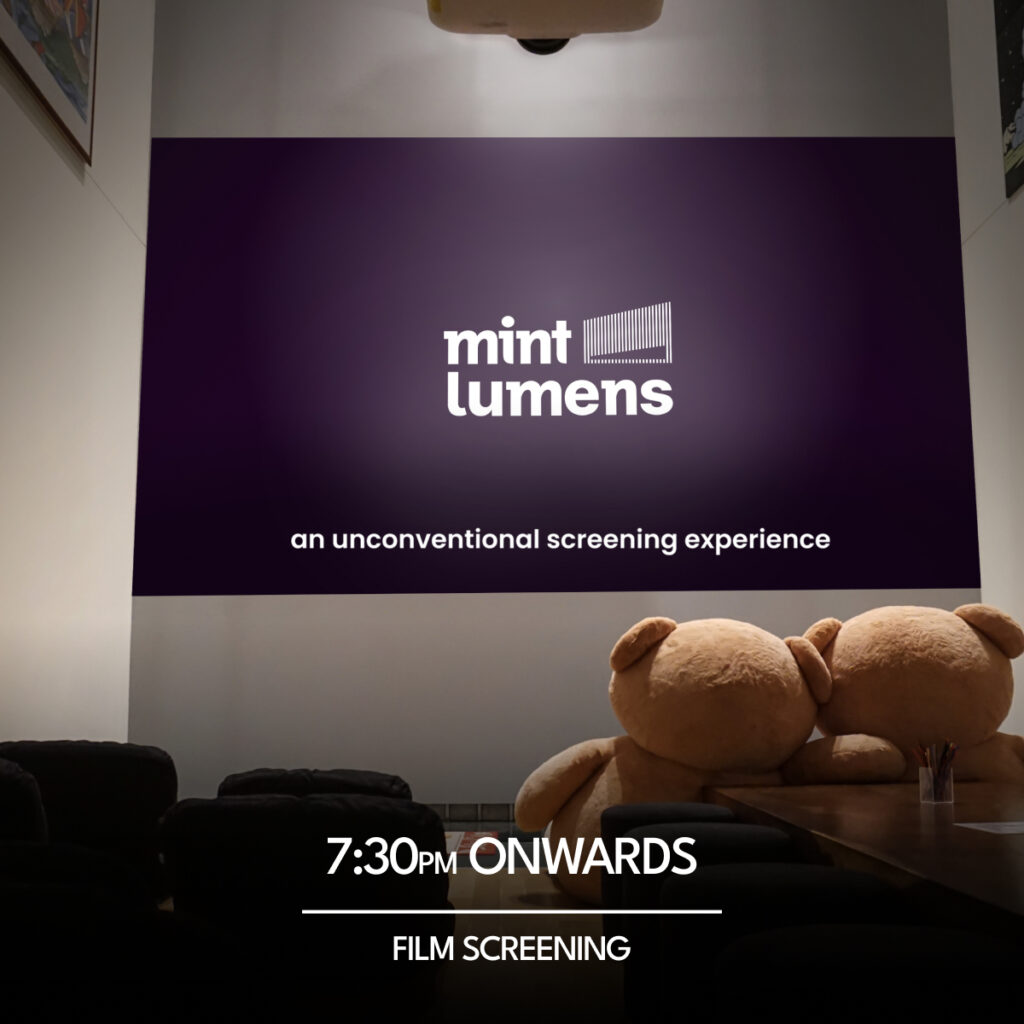
Upcoming Screenings
Our cinema calendar boasts a diverse selection of curated films, spanning various genres from classics to iconic blockbusters to local hits and even lesser-known indie gems. There’s something for everyone at any age, but here’s a little teaser:
- 27 October 2023: The Conjuring (2013, dir. James Wan, with toy collection discussion on How The Universal Classic Monsters Made Creepy Cool)
- 23 December 2023: Edward Scissorhands (1990, dir. Tim Burton, with toy collection discussion on The Cat That Captured the Nation: A Retrospective of Felix the Cat)
Did we mention you’ll get to choose what movie screens next? Visit the MINT Lumens page and vote in our poll to decide the movie for January 2024 and beyond! Upcoming screenings will be updated on our website, Facebook, and Instagram so stay tuned to our social media channels for the latest news.
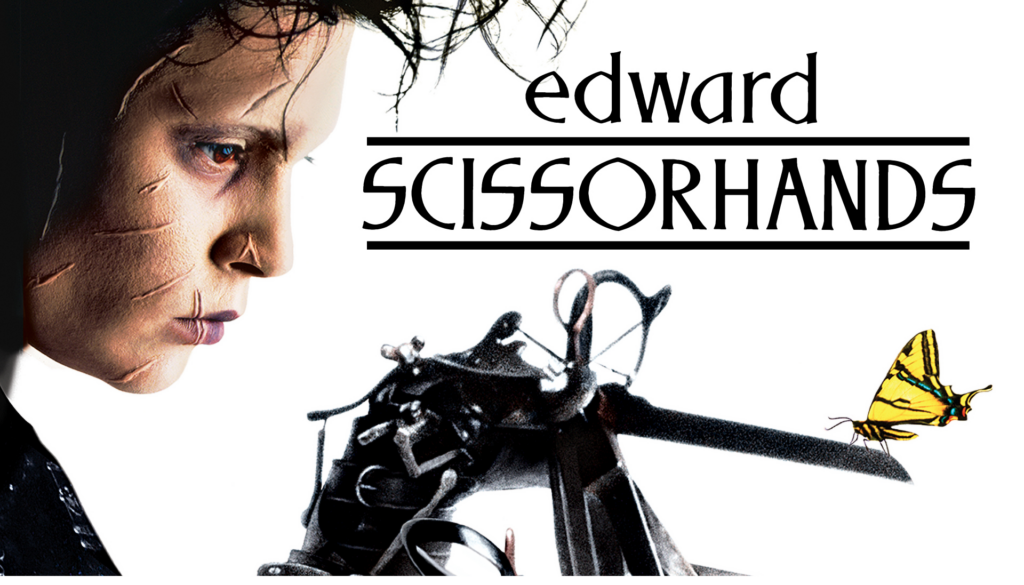
Your Exclusive Movie Night Out Awaits
Don’t miss your chance to experience MINT Lumens at the MINT Museum of Toys. Tickets are priced at S$60 per person and include the full experience: Wine in the Museum, Museum Collection Sharing, and the Screening in the Museum. All prices are inclusive of GST and service charges, ensuring you get the most out of your night.
Plus, we’ve got good news for cinephiles: you can rent out our private event space and pop-up spaces for your own events! Imagine having your own private cinema for special occasions, corporate gatherings, or simply a memorable wine and movie night with friends and family.
Book your MINT Lumens tickets today – it’s time to embark on a cinematic adventure you won’t forget.
In the realm of classic horror, one name stands tall, casting a long shadow of spookiness across generations: the Universal Classic Monsters. If the name of this group doesn’t seem familiar to you, fear not, for you’ll definitely know some of the legends under its wing – think Frankenstein’s Monster, Dracula, the Mummy, the Wolf Man, the Bride of Frankenstein, and even the Invisible Man.
These iconic creatures of the night have carved their ghoulish niche in the annals of cinema history even though there hasn’t been a new Universal Classic Monster movie since the 1950s! No doubt, this shows how far their impact has stretched beyond the silver screen and into our hearts.
Join the MINT Museum of Toys on a journey through the eerie and enchanting world of these legendary figures and how horror found a new home in pop culture.
Mid-Century Resurgence and Rising Success
While many of the legends featured in Universal Classic Monster movies have deep roots in global literature and folklore, it was their adaptation for the silver screen in the early years of cinema that catapulted them into the modern imagination.
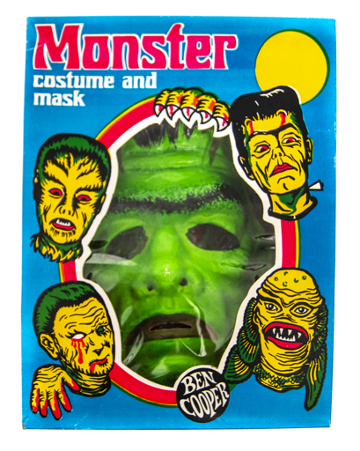
Maker: Ben Cooper Inc.
Year of Make: 1973
Material: Fabric & Celluloid
Country of Origin: United States of America
Take Frankenstein’s Monster, for instance. Mary Shelley’s novel first came to life in 1818, but was it Boris Karloff’s portrayal of the reanimated Monster in 1931’s Frankenstein that truly electrified audiences. Striking a balance between monstrosity and humanity, Karloff’s haunting visage captivated viewers, forever changing how we envision the iconic creation.
Similarly, Universal’s Dracula (1931), starring Bela Lugosi as the titular vampire, further solidified the studio’s hold on the horror genre. Putting a handsome face to Bram Stoker’s original descriptions, Lugosi’s suave and sinister portrayal gave rise to the enduring image of Dracula as a charismatic and deadly seducer of the night. Vampires had existed in folklore for centuries, even before the 1897 publication of Stoker’s novel, but Lugosi transformed the creature into a suave and timeless figure.
These films didn’t just terrify; they captivated, making household names of actors like Boris Karloff, Bela Lugosi, and Lon Chaney Jr. (the actor who played the Wolf Man) and their respective characters. Universal’s movies weren’t mere adaptations of longstanding myths; they were contemporary and relevant in a way that previous incarnations hadn’t been.
Even today, many Frankenstein-themed costumes, toys, or merchandise adopt the same features of this version of the monster, such as bolts in the neck, a lumbering gait, and a sickly greenish pallor to boot. As seen in this Monster Costume and Mask – Frankenstein, Karloff’s take on the Monster has gone beyond an individual performance and become an iconic character of its own.
Spillover Popularity and Cultural Recognition
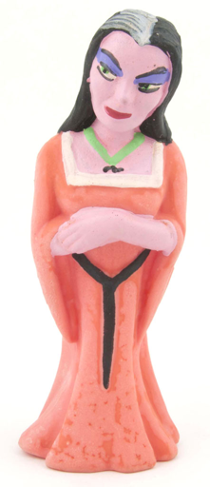
Maker: Laya
Year of Make: 1964 – 1969
Material: Rubber
Country of Origin: Spain
The impact of the Universal Classic Monsters didn’t end at the box office. Following in the footsteps of the merchandisation of iconic characters like Mickey Mouse, these creatures quickly seeped into every corner of pop culture. And it wasn’t just movies and tie-in merchandise, either. From Count Chocula cereal to Halloween costumes, these monsters transcended the screen.
They became cultural icons, influencing everything from fashion to music to other characters and franchises. Beyond pure horror and terror, these monsters became something else – cool. Think of the success of ‘The Munsters’, a live-action sitcom that ran between 1964 and 1966 and revolved around a family of monsters, including a Frankenstein’s Monster dad and vampire mum (Lily Munster, as depicted by this toy), or the Addams Family, a franchise that had its most recent incarnation in the 2022 Netflix series ‘Wednesday’.
The Universal Classic Monsters have undoubtedly left an indelible mark on the worlds of horror and pop culture. From the silver screen to your toy collection, these creatures of the night continue to captivate and inspire. They remind us that even in the darkest of tales, there is an enduring fascination and a timeless allure. So, whether you’re a die-hard fan or just discovering these legendary monsters, there’s no denying the creepy-cool charisma that the Universal Classic Monsters bring to our lives.
Visit the MINT Museum of Toys’ Spooky Horror stairwell collection today and embark on a thrilling adventure through monster memorabilia from around the world. Our enchanting museum in Singapore spans five storeys, offering an extensive array of toys and collectables to explore and private event spaces to rent. Plus, we don’t just offer a glimpse into the world of toys; we provide fantastic family bonding activities and pop-up events for all ages, and even a shop where you can pick up vintage toys for sale.
In an era where travel has become as common as a morning commute, it’s easy to forget that not too long ago, journeying to distant lands was a luxury afforded to a select few. While tourists and visitors have been bringing home souvenirs from their travels for millennia, the tourism keepsake industry had a turning point in the 20th century thanks to factors like mass production and the discovery of new materials like plastic.
Join the MINT Museum of Toys as we explore how the souvenir and keepsake industry blossomed after World War II and why these old mementoes still hold such significance today.
The Rise of the Mass-Produced Souvenir
For millennia, travelling for pleasure was an exclusive privilege enjoyed by the elite. Journeys could take weeks, months, or years, and only a fortunate few with the wealth and resources could venture beyond their hometowns or countries. This meant that keepsakes from far-off places were not just tokens but symbols of wealth, adventure, and cultural exposure. Luggage labels and other souvenirs were cherished mementoes of journeys that most people could only dream of taking.
However, the post-World War II era witnessed a remarkable shift in the international tourism industry. Aircraft and rail technology developments drastically cut travel time and cost, and computerised systems made flight and hotel bookings easier than ever before. Coupled with post-war economic booms, this finally made travel a viable option for middle- and working-class people.
Simultaneously, the souvenir, gift, and keepsake industry was receiving a boost from the proliferation of new materials (like plastic) and the globalisation of mass production. Attractions of all sizes could now offer visitors custom merchandise–serving as sentimental keepsakes and promotional material.
Today, you can find travel keepsakes in almost every size and price point. But beyond serving as home decor, there are plenty of reasons why travel keepsakes matter:
1. An eternal memory of a treasured trip
For many, a hotel label or a souvenir is more than just a piece of paper or a trinket. It’s a tangible reminder of a treasured journey, the places you visited, and the experiences you had. Holding such an item can instantly transport you back to a moment when you explored new horizons and made memories that would last a lifetime.
2. A historical artefact of places and times that no longer exist

Some of the most valuable travel keepsakes are those that harken back to places that have faded into history. For instance, Singapore boasts a rich tapestry of hotels with unique stories that are unfortunately no longer in operation, like the Adelphi Hotel, Station Hotel, and Cathay Hotel. Luggage labels, gifts, and trinkets from such establishments are not just souvenirs but relics from another era, offering a glimpse into Singapore’s past.
Interested in stepping into the Singapore of yesteryear? Pay a visit to the MINT Museum of Toys’ Level 2 Collectables exhibition to see even more vintage luggage tags and memorabilia!
Travel memorabilia can also be highly specific to the time and place they come from, serving as a time capsule for the past. Tea tins, spice boxes, and postcards, for example, were popular souvenirs during the British Raj. They were shipped globally due to interest in British India and depicted South Asian landscapes, people, and communities through an Anglicised lens. By looking at such historical toys and memorabilia from the British Raj, we can understand how certain groups of people were viewed and treated back then – and trace the impact of that till today.
3. A reflection of changes through time for places that do still exist

On the flip side, travel keepsakes also serve as fascinating markers of continuity. For example, the iconic Raffles Hotel in Singapore has stood the test of time and continues to be a symbol of elegance and luxury. Looking at how souvenirs from Raffles Hotel have changed over the years allows us to trace the evolution of this historic establishment and witness its enduring allure.
Call them kitschy or overrated, but travel souvenirs, including hotel gifts and mementoes, will always hold a unique place in our hearts and history. They are not mere trinkets; they are windows into the past, carriers of memories, and connections to the places and experiences that have shaped our lives. So, the next time you stumble upon an old luggage label or a faded souvenir, take a moment to appreciate the rich history it represents and the countless stories it holds.
P.S. If you’re a collector or toy enthusiast with their own time capsule of memorabilia they want to show off, get in touch with our team about booking our pop-up spaces and bar space for rent to host your own mini exhibition!
As the Singapore F1 Grand Prix draws near, it’s the perfect time to journey through the captivating world of vintage toy cars. Here at the MINT Museum of Toys, we’re steering you down memory lane with a fascinating collection that echoes the roaring engines and sleek designs of iconic Grand Prix racing cars in their heyday. Buckle up because we’re diving into the history of toy cars, from their inception to their modern-day charm.
The Evolution of Toy Cars: From Play to Passion
Toy cars have been a staple in the world of play for decades, captivating the hearts of both children and adults. Post World War II, two distinct trends emerged: die-cast toy cars and plastic toy cars.
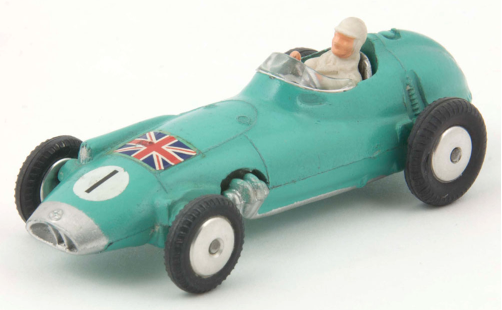
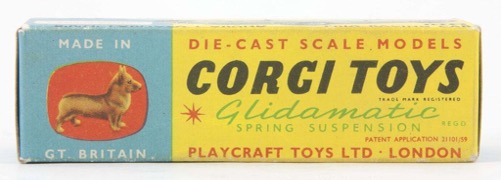
Company: Corgi Mettoy Playcraft Ltd
Year of Make: 1960s
Material: Metal, Rubber
Country of Origin: United Kingdom
Among the two trends, die-cast toy cars like this British Racing Motors Grand Prix Racing Car held a special place due to their meticulous craftsmanship and lifelike design. Crafted with metal alloys and painstaking attention to detail, these miniature marvels offered an exquisite representation of their real-life counterparts. The die-casting process allowed for intricate features such as working wheels, realistic paint finishes, and even functional components like opening doors. These minute details didn’t merely replicate the appearance of actual vehicles; they encapsulated the essence of automotive artistry.
Read More: The Story of Philip Ullmann: Jewish Refugee Turned Die-Cast Powerhouse
Collectors and enthusiasts were drawn to die-cast cars for their authenticity, often mirroring the models that raced through history or graced the streets. Every curve, every emblem, and every shade of paint seemed to carry a piece of automotive legacy, bringing forth a tangible connection to the world of automobiles.
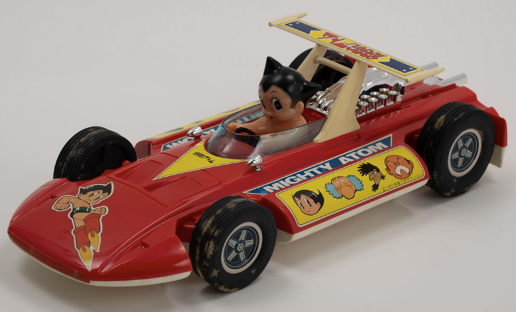
Company: Popy
Year of Make: 1970s
Materials: Plastic, Rubber
Country: Japan
In tandem with die-cast cars, the surge in popularity of plastic toy cars created an accessible avenue for play and exploration. Plastic, a versatile and affordable material, allowed toy manufacturers to experiment with shapes, sizes, and designs like never before. The result was an explosion of creativity, giving birth to an array of cars that spanned eras, genres, and even realms of fantasy like this Astro Boy Ferrari Sigma Grand Prix Show Car. In it, the fictional character Astro Boy sits in a replica of the late 1960s Formula 1 Ferrari Sigma Grand Prix show car, complete with a single-seater open cockpit and a spoiler mounted above the driver. The car was originally designed as a show car rather than for mass production, and introduced then-new and innovative safety features to the racing world.
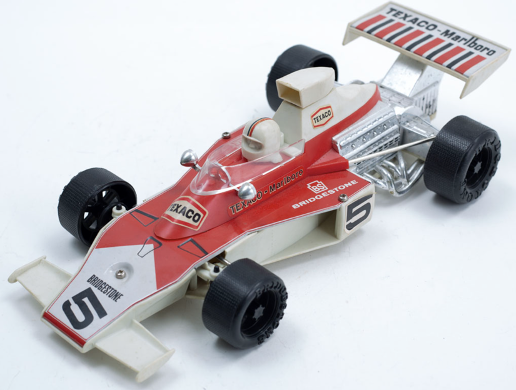
Company: Trademark Side View Sea Creature
Year of Make: 1970s
Materials: Plastic
Country: Hong Kong
Plastic toy cars like this McLaren M23 Texaco Grand Prix Racing Car weren’t just playthings; they became vessels for storytelling, imagination, and interaction. Children could embark on journeys across imaginary landscapes, their cars navigating uncharted territories of bedroom floors and sandbox terrains. The affordability of plastic cars also democratised play, ensuring that the joy of collecting and racing was accessible to a wider audience.
Read More: Celluloid Dreams: The Advent of Mass-Produced Plastic Toys
Enjoy a Timeless Tribute to Grand Prix Racing Cars
Racing enthusiasts, young and old, can now revel in our limited-time guided tour programme, “Grand Prix Racing Cars from 1950s – 1970s Guided Tour.” Taking place from 8th to 17th September 2023, immerse yourself in the glory days of motorsport as we showcase rare and vintage toy cars inspired by legendary Grand Prix racing vehicles. Fuel your passion for vintage toy cars and exhilarating Grand Prix history with a 30-minute guided tour and an ice-cold draft beer – on us with the purchase of a pop-up entry ticket!
As we rev up for the F1 race in Singapore, MINT Museum of Toys celebrates the allure of vintage toy cars, combining nostalgia, education, and excitement on wheels. Join us to explore this unique fusion of craftsmanship, innovation, and timeless charm. Get your engines running, and let the journey begin!
Passionate about a topic or collection and want to share your interest with the world? Get in touch for more information on our private event spaces for pop-ups, private parties, photoshoots, and more!
